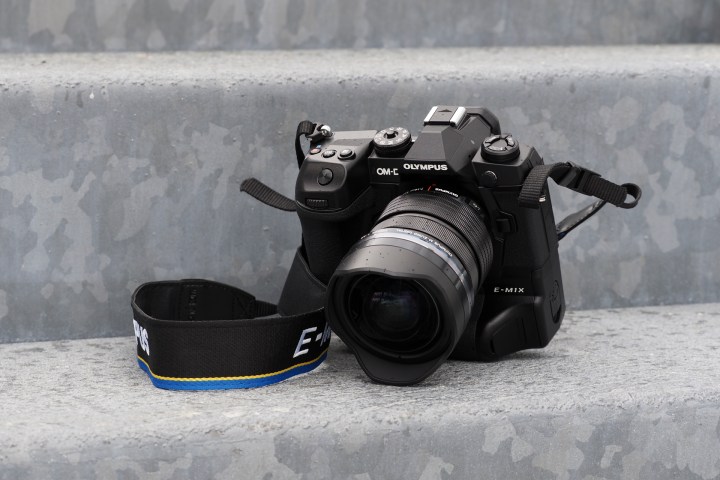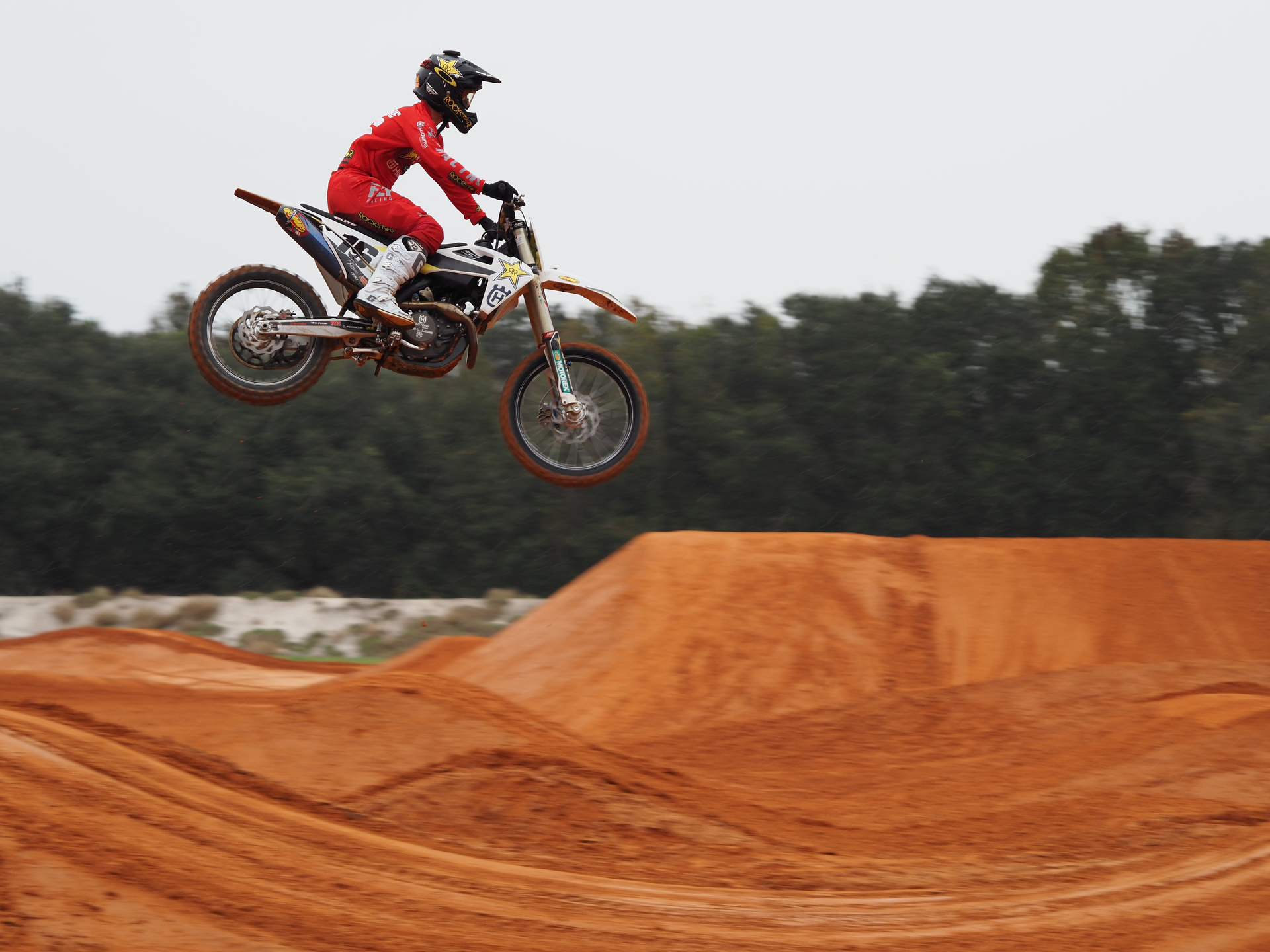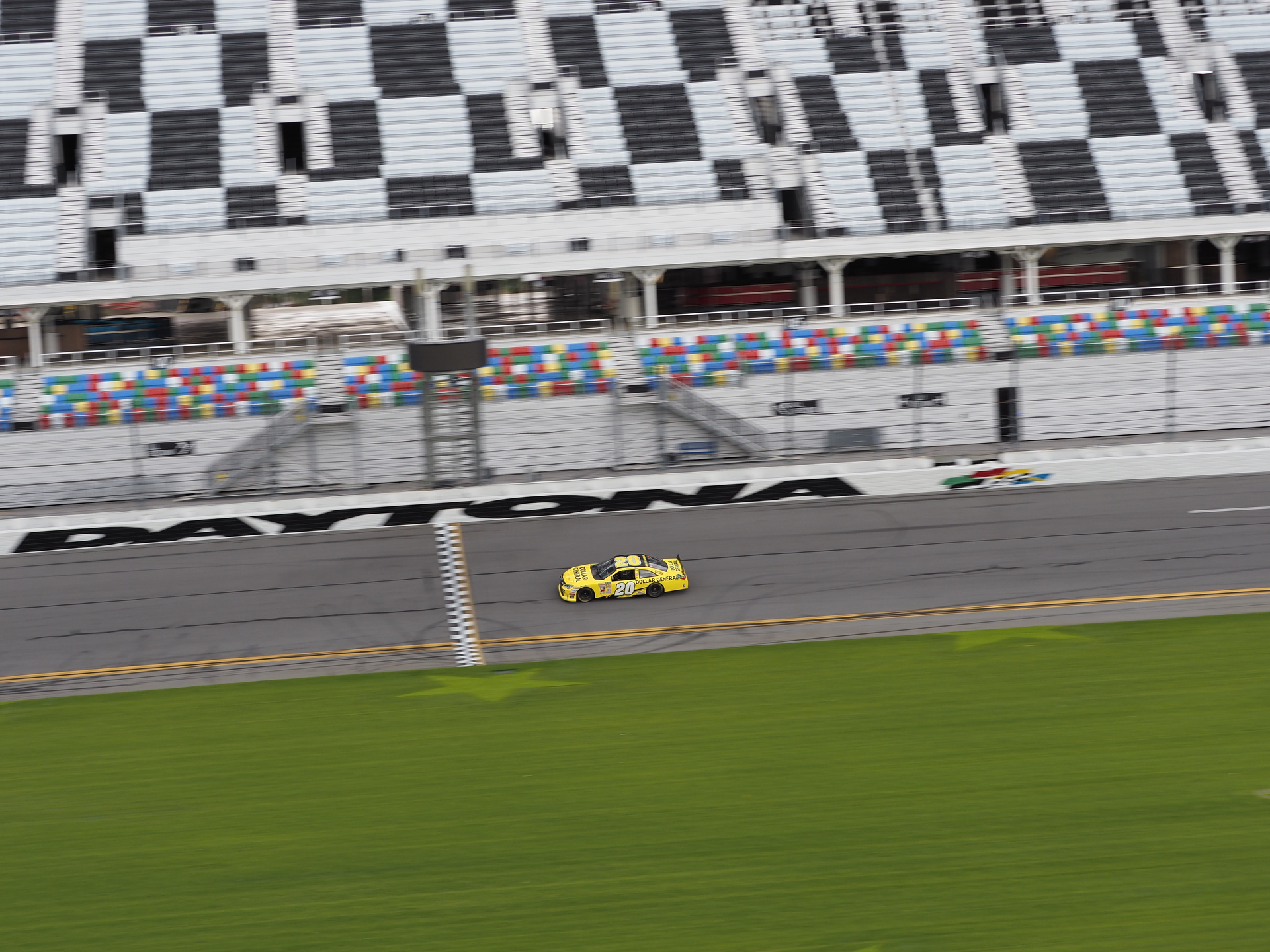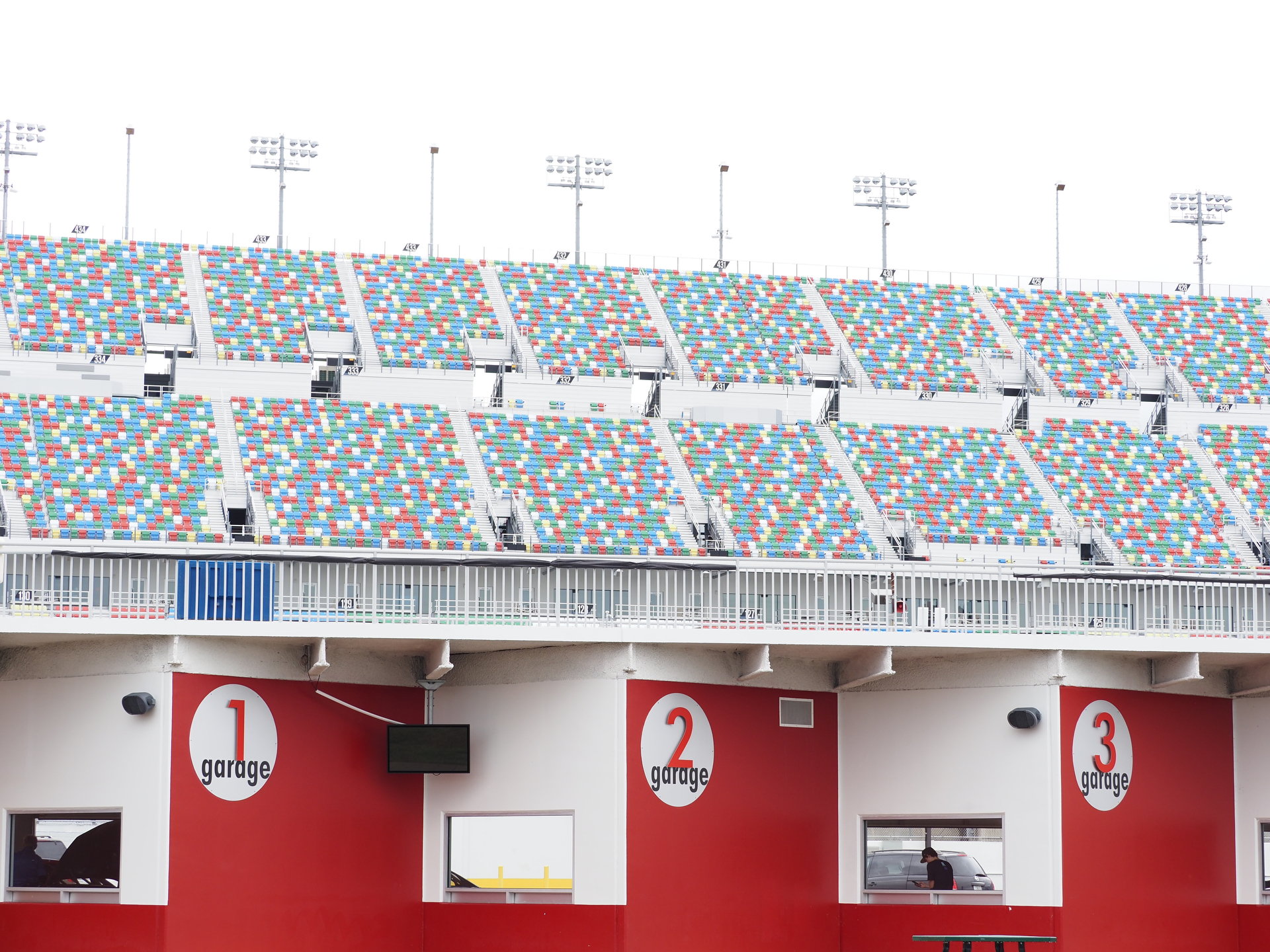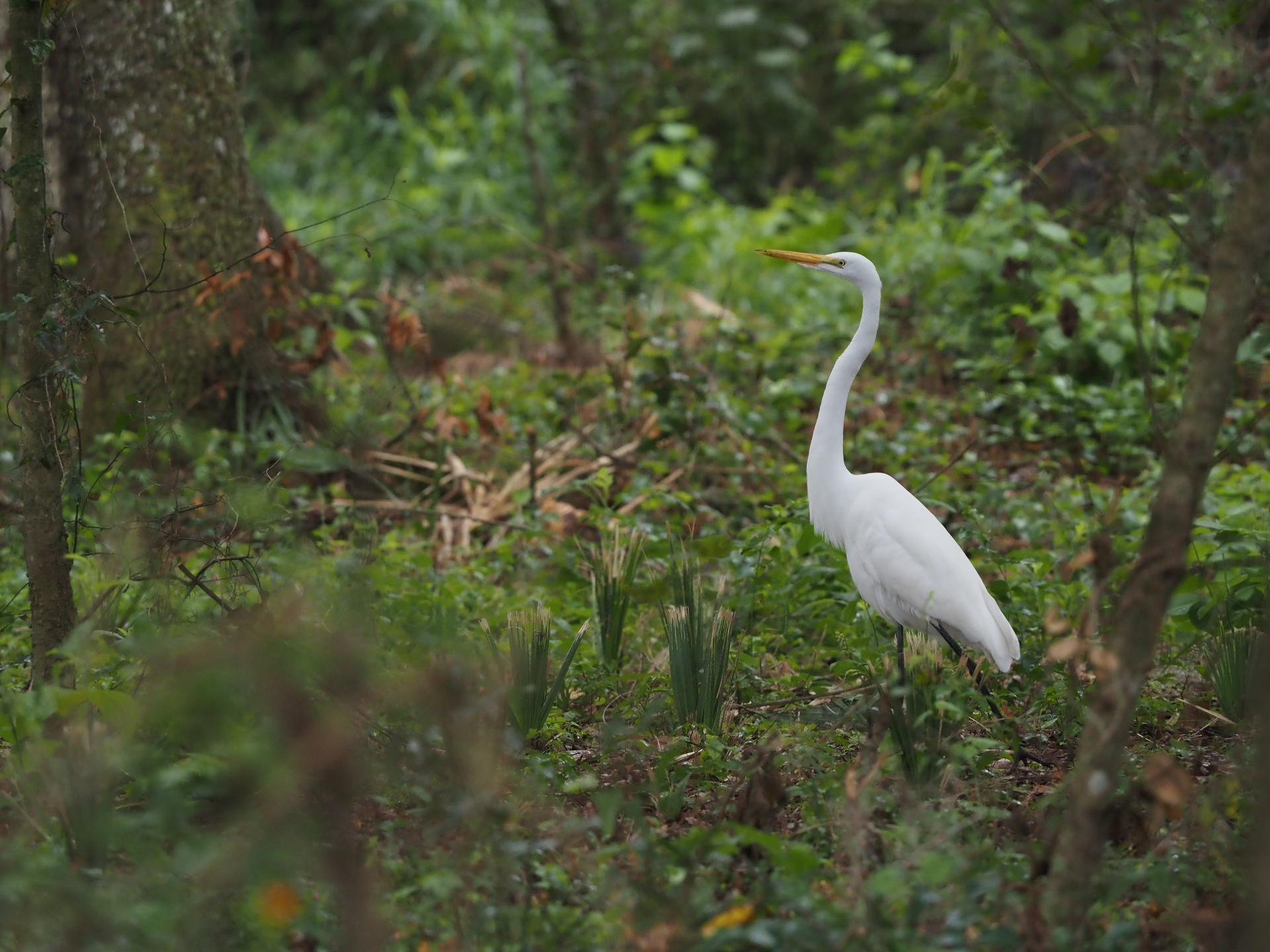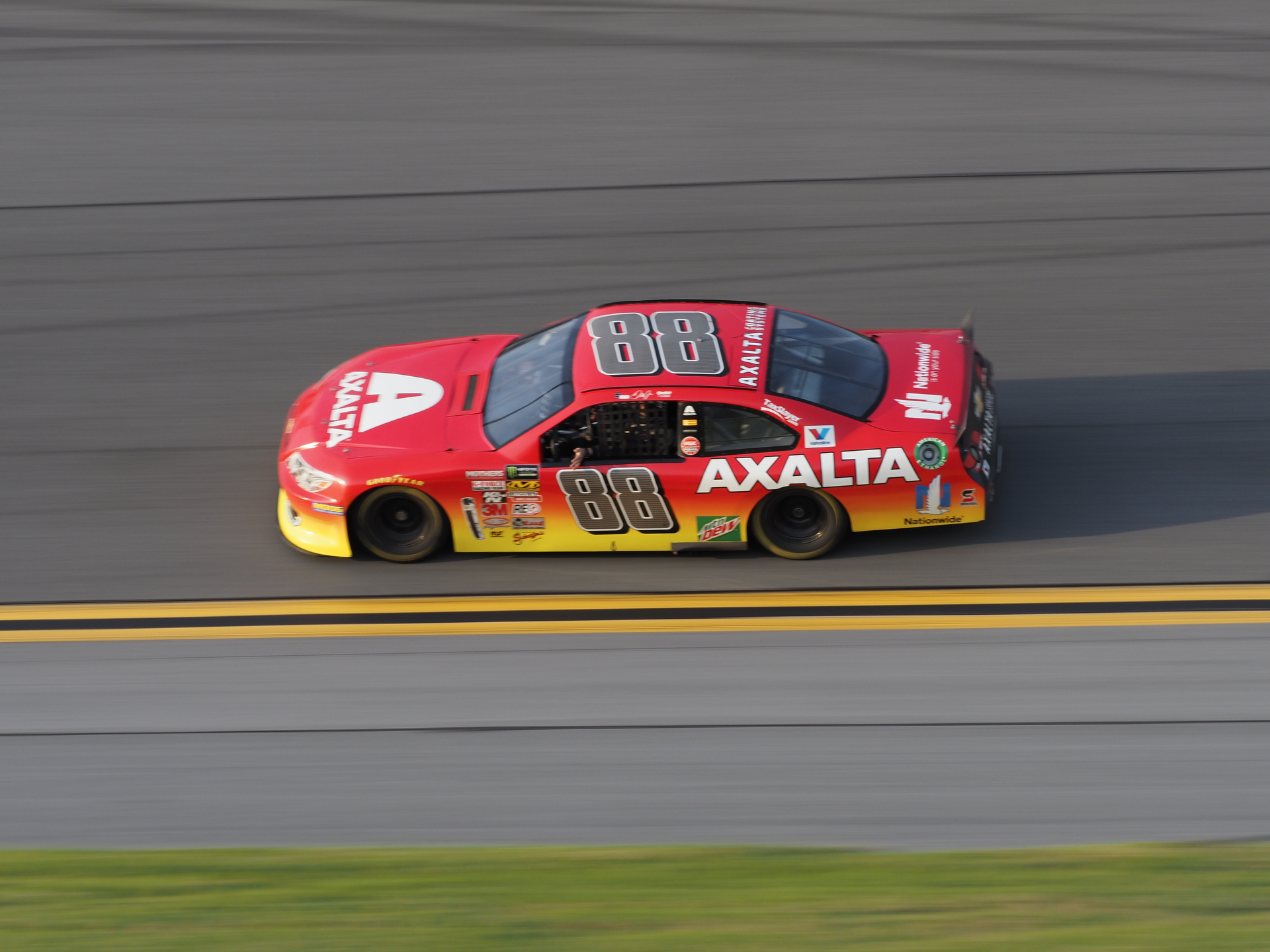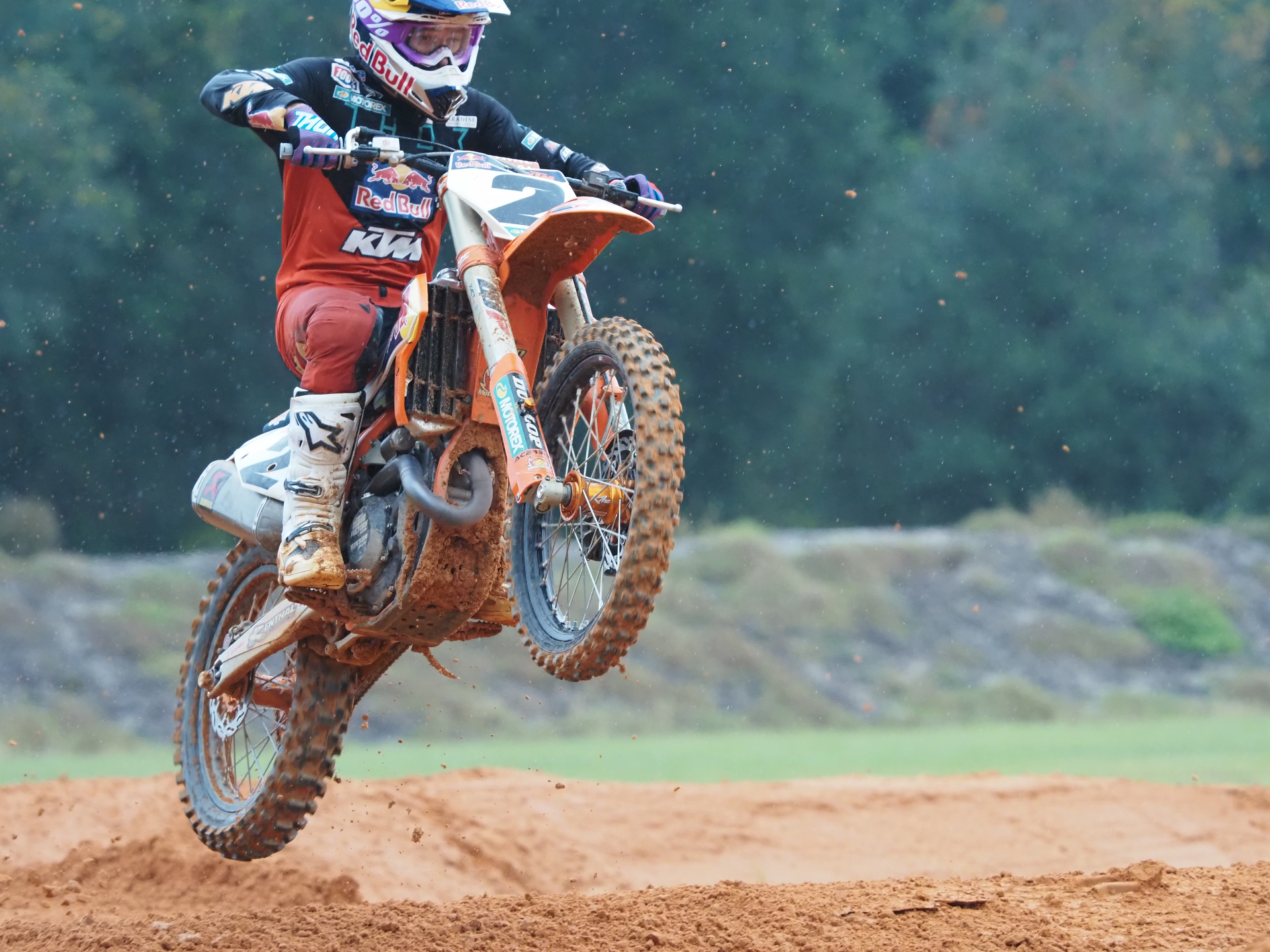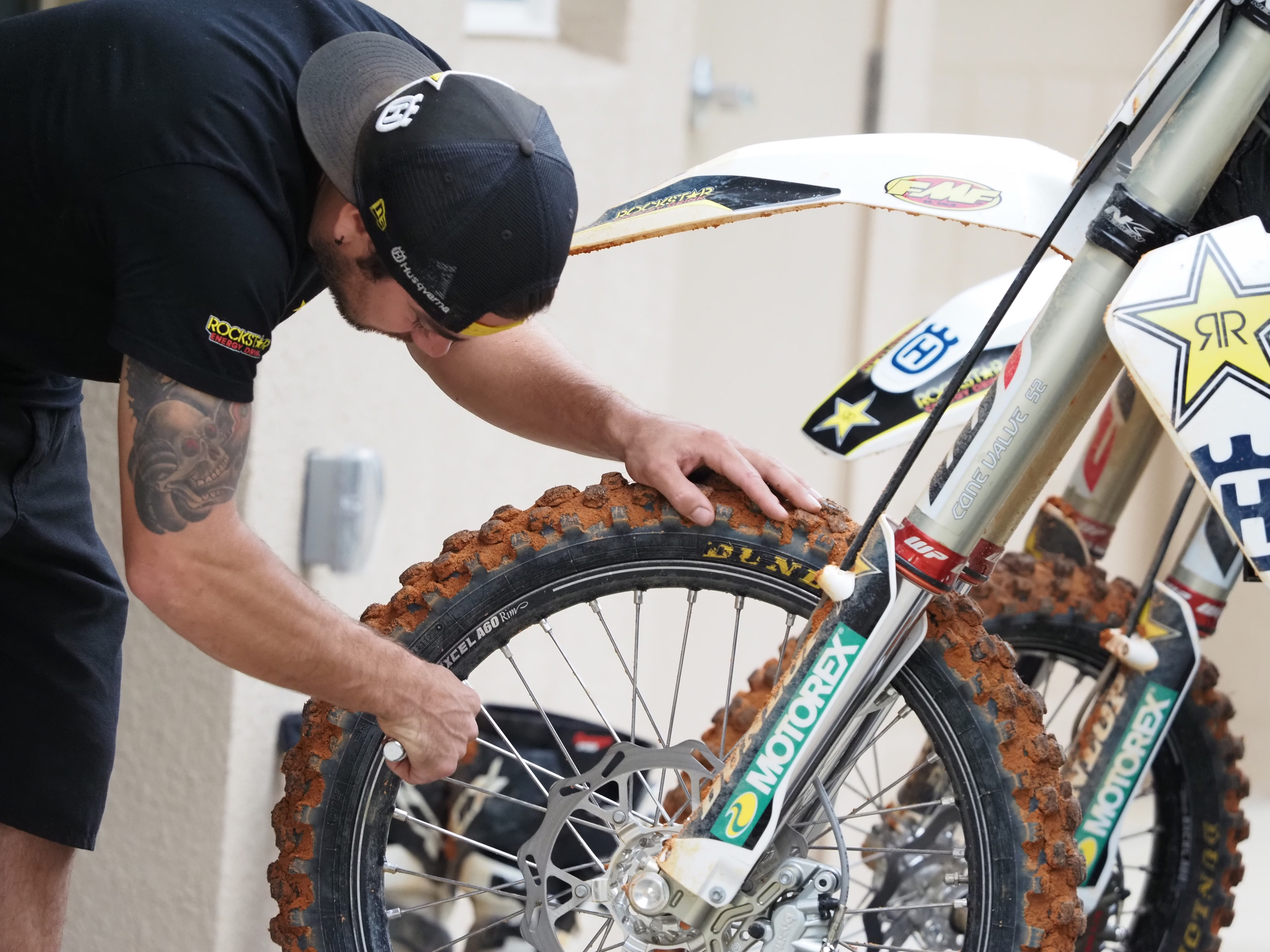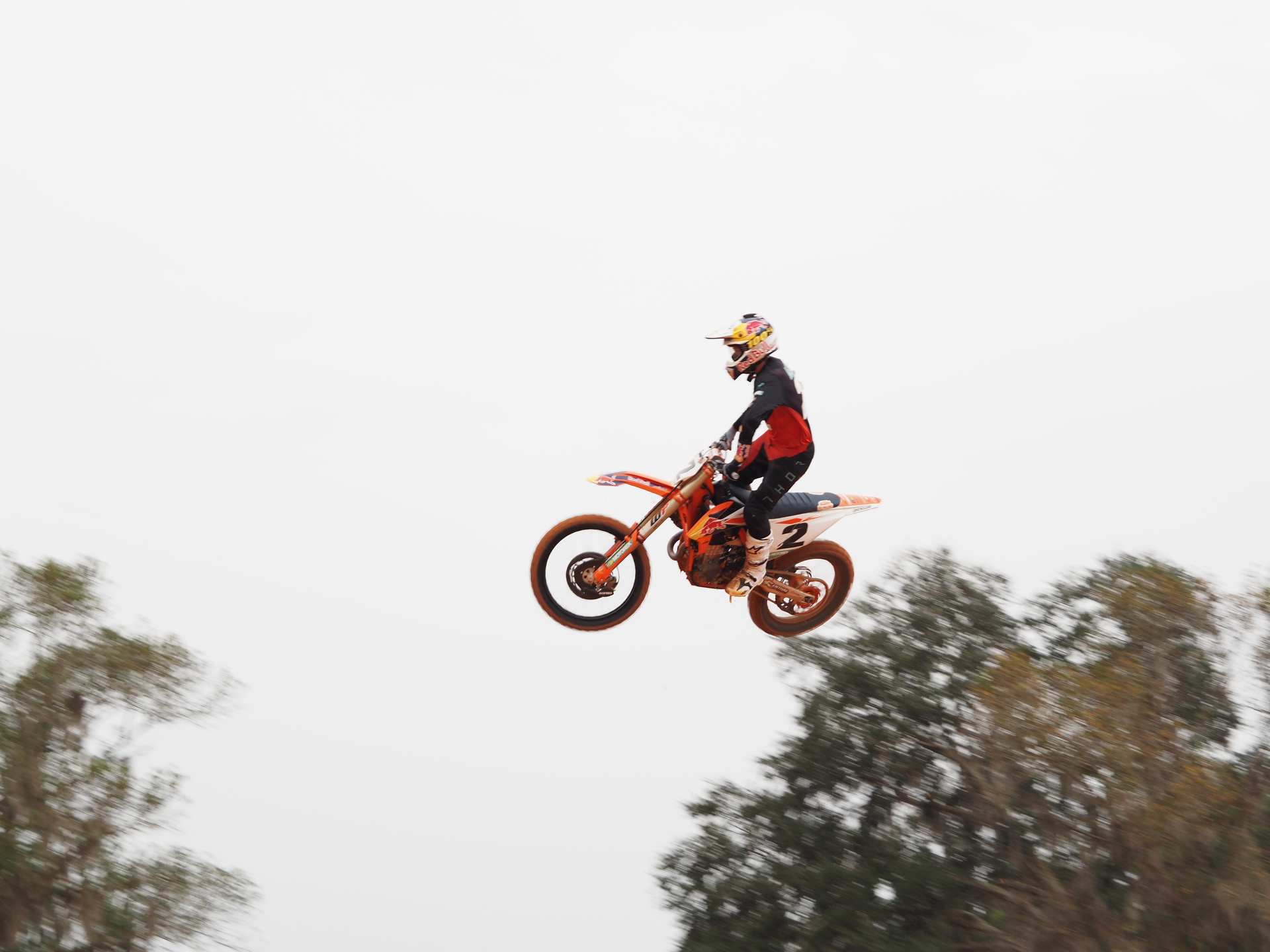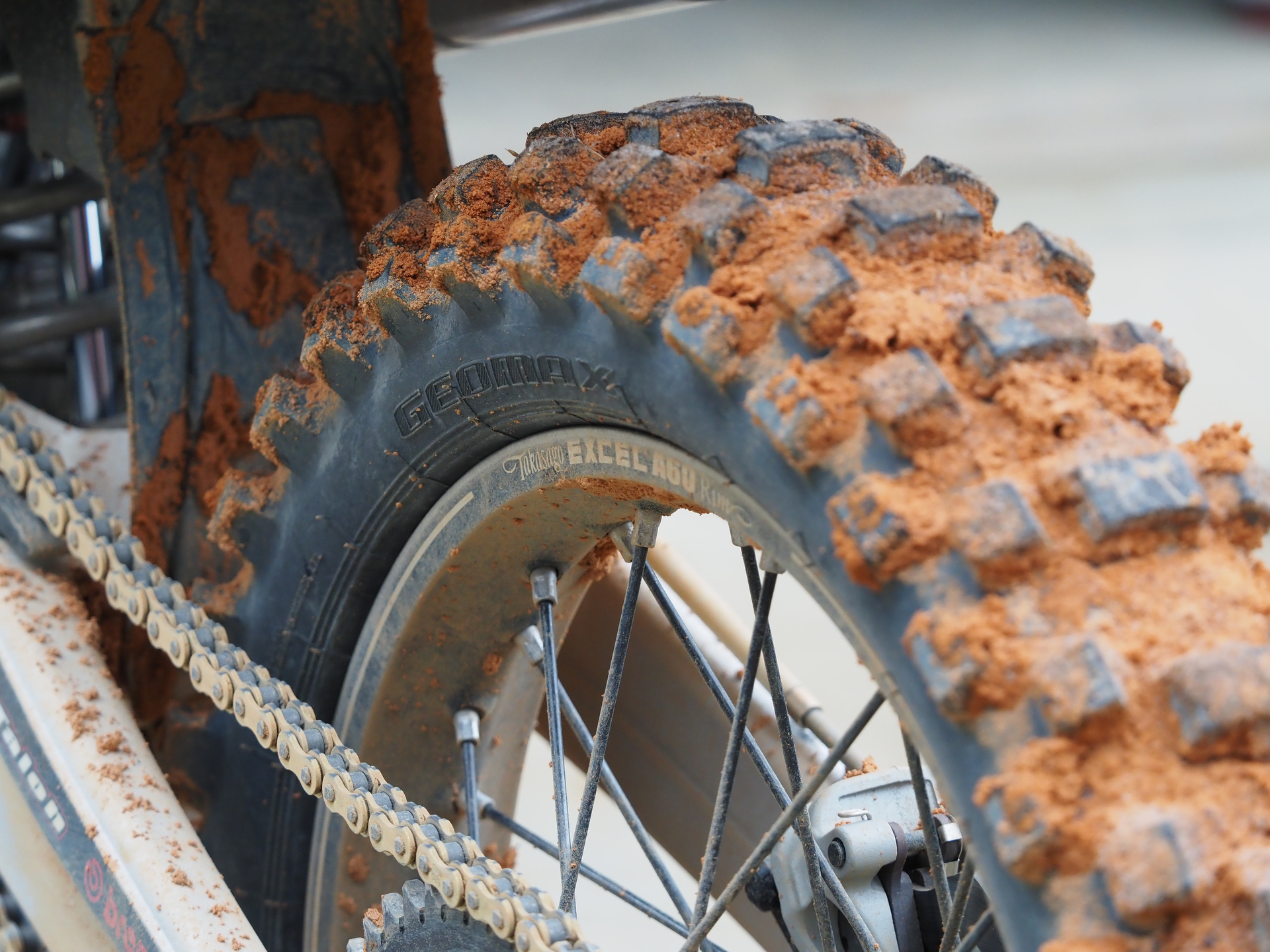
- 7.5-stop image stabilization
- Fast burst shooting and autofocus
- Integrated dual-battery grip
- 4K video with OM-Log400
- Excellent weather-sealing
- Expensive for the format
- EVF is lower resolution than the competition
- Larger, heavier than full-frame mirrorless
Announced on January 24, the Olympus OM-D E-M1X is a speedy, 20-megapixel pro mirrorless camera that will make you want to trash your tripod. Targeted towards sports and wildlife photographers, the Micro Four Thirds camera boasts the world’s most powerful image stabilization, with up to 7.5 stops of shake reduction. As more brands move towards full-frame mirrorless — including Micro Four Thirds founder Panasonic — Olympus’ decision to stick with the smaller sensor size may seem questionable, but the E-M1X continues to push the format forward.
Rather than replace it, the E-M1X sits alongside the E-M1 Mark II as an even higher-end option targeting working professionals. At $3,000, it is Olympus’ most expensive Micro Four Thirds camera yet. Everything from speed and autofocus to physical durability has been dialed up, but the headline feature is the internal stabilization, which offers a full stop improvement over the E-M1. As Olympus had previously stated 6.5 stops was a theoretical limit due to the rotation of the earth, the E-M1X’s 7.5 stops (when paired with a compatible lens) is all the more impressive.
We tried out the OM-D E-M1X at a press event in Orlando, shooting motocross, NASCAR, football, and night life with pre-production firmware. (We were guests of Olympus, but all opinions are our own.) While Four Thirds may not match the image quality of full-frame, the E-M1X proves that bigger isn’t always better and that it can hold its own in the most demanding situations.
Body and Design
While Micro Four Thirds is typically favored for its smaller size, the E-M1X gains significant bulk from its built-in battery grip, which Olympus says allows for greater durability and identical controls in both horizontal and vertical shooting positions. That larger body offers improved durability and also houses dual processors and dual batteries, boosting performance and extending battery life to over 800 exposures.
But fans of small, lightweight mirrorless cameras may be turned away. The E-M1X weighs about 2.2 pounds and sits about 5.75 inches tall. That integrated grip brings the Micro Four Thirds camera closer to the feel of an APS-C or even full-frame DSLR — in fact, the E-M1X is heavier than the Nikon Z7 and Canon EOS R, two of the larger full-frame mirrorless cameras.
Still, the E-M1X does maintain some size benefits due to the smaller Micro Four Thirds lenses. For example, the Olympus 300mm f/4 lens (600mm equivalent thanks to the 2X crop factor) is a third of the weight of Nikon’s 600mm (and nearly $10,000 cheaper). Olympus says it will soon have lens options that reach 2,000mm equivalent. (Alongside the E-M1X, Olympus also announced the development of a 2x teleconverter and a 150-400mm lens with a built-in 1.25X teleconverter). This all means that professional sports photographers — who often carry multiple cameras and lenses on them — may still come out ahead in the weight game.
The E-M1X’s new electronic viewfinder (EVF) features a 120-frames-per-second refresh rate with a display lag of just 5-milliseconds
Olympus says the E-M1X is designed to allow photographers to shoot both horizontally and vertically without pulling away from the viewfinder. And with some time to get acquainted with the different controls, that claim holds true. You’ll find exposure compensation, ISO, and video record buttons all up top near the shutter release, but each is differentiated by size and texture so that you always know which is which even without looking.
On the back of the camera lives the now ubiquitous joystick for selecting the focus point, which is duplicated further down for shooting in vertical orientation. On the front of the camera, a one touch white balance button and depth of field preview button are also duplicated in similar positions near the base of the lens. And if you find yourself bumping those duplicated controls while shooting, there’s a switch to lock out the second set of controls.

In vertical orientation, only one control is not duplicated in the shutter release cluster: the video record button. (Most won’t miss it, unless you want to shoot vertical videos for the likes of Instagram TV.)
In practice, we found the design to be comfortable for both horizontal and vertical shooting. The grip is large and ergonomic, though for longer shoots, the size and weight does begin to take a toll on your right hand. Excellent stabilization aside, you may still want a monopod.
The E-M1X has dual SD card slots accessed on the right, while the two batteries are accessed on the left, inside a single slide-out compartment. The batteries can also be charged over USB-C, and doing so will charge both batteries — an external charger is also included, but this can only charge one battery at a time. Other ports include HDMI, headphone and microphone jacks, auxiliary power, and a slot for a remote accessory.
More mirrorless camera reviews
- Equal parts fresh and familiar, Canon’s EOS R gives pros the best of both
- With the Z7, Nikon gives DSLR holdouts the mirrorless wonder they’ve waited for
- A year after release, Sony’s mighty A9 is still the camera to beat
- The design still says retro, but Fujifilm’s X-T3 is all about the future
A new electronic viewfinder (EVF) features a 120-frames-per-second refresh rate with a display lag of just 5-milliseconds, which is Olympus says is undetectable to the human eye. The viewfinder also has a large 0.83x magnification, which is quite good. However, the EVF falls short of other mirrorless cameras in some key ways. Colors can appear muddled and aren’t accurate to the colors the camera is actually capturing, and the resolution, at 2.36 million dots, doesn’t offer the sharpness of the 3.69-million-dot EVFs that sprung up from several other brands in 2018.
The LCD screen is touch sensitive and fully articulates out the left side. Colors on the LCD are a bit better than the EVF, though still a little muted in live view compared to the more accurate colors of the playback mode.
With two batteries, the E-M1X doesn’t suffer from the same brief life of most mirrorless cameras. With both batteries installed, it can keep shooting for between 870 shots and 2,580 shots depending on how it’s being used (using image stabilization drains more battery life). One oddity is that the battery indicator only shows one battery at a time, and tends to keep flashing if you’ve exhausted the first battery.

That’s all wrapped up in what Olympus says is their most durable body yet. Our review unit easily survived multiple unexpected rainy shoots in the Sunshine State. Olympus also says the shutter is the most durable, rated for 400,000 shots.
Autofocus
Olympus says the E-M1X’s updated autofocus system is designed to compete with DSLRs — and in our hands-on experience, we would say it’s at least in the same ballpark. Its 121 points are not as numerous as the systems on other high-end mirrorless cameras, but all of those points offer phase and contrast detection and are cross type, meaning they are sensitive to both vertical and horizontal lines.
Some DSLRs will perform better but overall we weren’t disappointed with low-light autofocus.
But it doesn’t stop there. The new AF system is augmented with artificial intelligence so that it can recognize a variety of subjects and focus on and track them accordingly. For example, in motorsports it is smart enough to focus on the driver, not just the vehicle. This also works on trains and airplanes by detecting and focusing on the cockpit. A white box around the subject lets you know the system is working.
However, photographers will have to dig into the autofocus custom menu to choose which sport they are shooting — the camera doesn’t automatically detect the type of subject. In continuous autofocus with tracking mode — labeled C-AF+TR — you’re also limited to low sequential mode, which is still up to 10 fps, but you won’t get subject tracking at the fastest 18 fps.
While the A.I. tracking is fairly quick, it performed best when it had time to lock on before shooting. Shooting as soon as the subject appeared in frame — like a motorcycle coming over a jump — proved tougher for the camera, although not always impossible. Overall, the system seemed to work well, though if you get a bit too eager and start shooting before that white box appears, the entire sequence may come out soft.
Low light autofocus is good, but not great. In dim backlighting, the E-M1X didn’t struggle to lock on the subject as much as some other mirrorless models (like the Nikon Z7). Like other systems with contrast detection, placing the focal point on the edge of a dimly lit subject helps lock on faster and the autofocus locks on easily in contrasty night scenes, like a cityscape. Some DSLRs will still perform better in low light, but overall we weren’t disappointed with the performance of the E-M1X.
Speed
With two processors, the E-M1X gets a speed boost over Olympus’ earlier (and smaller) models. It shoots fast, buffers quickly and loads previews near instantly when not simultaneously recording to the card.
While the A.I. tracking may not work at 18 fps, regular continuous autofocus still does. The electronic shutter pushes the burst rate even higher, to 60 fps, but it sacrifices continuous autofocus to get there. The low continuous speed can shoot as fast as 10 fps — which is hardly “low” by anyone else’s standards — or you can customize it to a slower speed in the menu.

Shooting RAW + JPEG, the camera can snap away at 18 fps for about 3 seconds. After that, the camera continues shooting but at a much lower speed. The camera has more endurance at the lower speeds — it can maintain 10 fps for about five seconds before slowing.
We also noted how quickly the E-M1X recalls images in playback mode. The exception is when the camera is still writing a long set of burst images to the card.
Stabilization good enough to ditch the tripod
Olympus has long been a leader in sensor-shift image stabilization, and the E-M1X takes another big step forward. It offers an incredible 7.5 stops of stabilization when using a compatible stabilized lens, or 7 with the in-body stabilization alone. Both numbers are the best we’ve ever seen. Olympus says they can’t get any better than this due to the rotation of the earth, but that’s exactly what they said last time when the limit was 6.5 stops.
What you can accomplish with the new system is astounding. Most people should have no trouble shooting shutter speeds as slow as 4 seconds, and some will get even more out of it. We shot a 20-second night exposure without a tripod — and it was sharp. Standing on a windy balcony waiting for the exposure to finish and watching our hands shake, we thought for sure there was no way that shot was going to come out, but it did.
The stabilization also plays a big role in being able to shoot longer telephoto lenses without a tripod. Even if your shutter speed is fast enough to prevent blur, the stabilizer gives you a rock steady preview image to look at, which makes it easier to frame your shot.
As with the E-M1 Mark II, the image stabilization system also powers the High Resolution Shot mode which combines eight exposures into a 50-megapixel image. What’s new to the E-M1X is that you can now use High Resolution Shot handheld.

Rather than moving the sensor a half-pixel’s width in between frames, as it does on a tripod, it actually uses the natural movement caused by your hands to measure out each exposure. This seemed to work well and produced detailed images, though on occasion an error message said the image couldn’t be stitched, which happened when hand movements were more dramatic or the shutter speed was too slow.
Image quality
As we were working with pre-production firmware for most of our shooting, we cannot judge image quality yet as some things were still subject to change. However, the camera uses the same sensor as the earlier E-M1 Mark II, and image quality will likely be fairly similar (noise reduction did seem to be better on the E-M1X, likely thanks to the new processors).
We were at least able to test out the ISO capabilities after receiving final production firmware, and got solid results up to around ISO 1600. After that point, color noise becomes more noticeable and distracting, though post-processing can likely help clean it up. At ISO 6,400, color noise becomes splotchy in the shadows. The native ISO range is 200-6,400, extendable to 64-25,600.
A 20MP sensor isn’t exactly high resolution by today’s standards, but it helps keep file sizes manageable and is more than enough resolution for most sports shooters. When additional detail is needed, like for landscapes or studio work, the High Res Shot mode creates an image more than 8,000 pixels wide. This was enough to let us zoom in on a shot of bleachers at Daytona and read the seat numbers on the back of each seat.
With the OM-D E-M1X, Olympus proves that bigger sensors aren’t always better.
However, there’s no getting around the fact that it’s a Four Thirds sensor. Compared to full frame, getting those creamy soft backgrounds is harder to do and requires very wide-aperture lenses (such as Olympus’s F1.2 Pro series). Full-frame sensors also tend to handle higher ISOs better as they have more surface area exposed to light. That said, the smaller Four Thirds format should work well for the E-M1X’s target demographic of sports and wildlife photographers — and the image stabilization and High Res Shot mode helps with landscapes, too.
Video has also been improved, with Olympus offering its most professional movie mode yet. UltraHD (3,840 x 2,160) and DCI 4K (4,096 x 2,160) resolutions at 30 or 24 fps. Slow motion is available at 120 fps in HD, and image stabilization is available while recording. For the first time, Olympus has also added a flat, logarithmic color profile, called OM-Log400, for recording more dynamic range in video mode. Clean HDMI output also allows for 4:2:2 8-bit video to be recorded externally.
Our Take
With the OM-D E-M1X, Olympus proves that bigger sensors aren’t always better. That said, putting a small sensor in a large body isn’t a recipe that will work for everyone. The E-M1X excels when attached to long lenses, using its 2X crop factor for greater reach while shaving off both weight and price compared to full-frame lenses. Add to this the best stabilization system we’ve ever seen, an 18 fps burst rate, and A.I.-assisted autofocus, and it’s easy to see the camera fitting into the sports and wildlife genres.
The impressive image stabilization also allows night photographers to creep outside of the milliseconds range and into longer exposures without hauling a tripod around. And when you need resolution beyond 20 megapixels, the High Res Shot mode doesn’t require a tripod. That’s all wrapped up into a camera body with two comfortable grips, a healthy amount of physical controls, and excellent weather-sealing.
The E-M1X isn’t perfect, however. The body is larger and heavier than most full-frame mirrorless cameras. The EVF also left us a little underwhelmed, especially for a $3,000 flagship camera. And while the Four Thirds sensor is a perk when shooting telephoto, it’s a downfall if you want super soft backgrounds or need to call on more extreme ISO settings.
Is there a better alternative?
Like any camera, the answer depends on what you want to shoot. The E-M1X is one of the best cameras for photographers that shoot extreme telephoto lenses thanks to its image stabilization system and the simple fact that Micro Four Thirds lenses are smaller than those for APS-C or full-frame. The fast performance and durable design certainly helps, too. But photographers that need that background bokeh or high ISOs will likely want to spend their $3,000 on something with a larger sensor.
How long will it last?
Olympus says the E-M1X is their most durable camera yet — and while our review wasn’t long enough to put the camera through that 400,000-shot shutter rating, what we’ve seen so far suggests a well-built camera. That said, the sensor hasn’t changed since 2016’s E-M1 Mark II, and it is anyone’s guess what Olympus may add a year or two down the road.
Should you buy it?
If you need to shoot fast, telephoto subjects without a tripod, the Olympus OM-D E-M1X should be at the top of your list. The stabilization simply cannot be beat, but bokeh-loving photographers could spend a similar amount (or less) on a smaller full-frame mirrorless camera.
Editors' Recommendations
- Olympus E-M1 Mark III vs. Olympus E-M1 Mark II: Is the upgrade worth it?
- The Olympus PEN E-PL10 is a stylish beginner’s camera hiding last-gen hardware
- Canon’s EOS-1D X Mark III wants to squash mirrorless with 20 fps, 10-bit color
- New teleconverter from Olympus doubles the reach of its longest lenses



